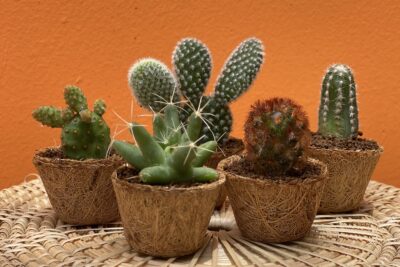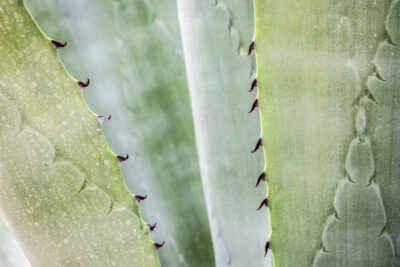
Low-Maintenance Succulents That Mimic Cacti: A Guide to Easy Care

Succulents have gained immense popularity in recent years as houseplants due to their unique appearance and low-maintenance nature. Among the wide variety of succulents available, those that mimic cacti are particularly sought after for their striking resemblance to desert-dwelling plants. These plants not only add a touch of exoticism to any indoor space but also require minimal care, making them perfect for busy individuals or those lacking a green thumb.
We will explore the world of low-maintenance succulents that mimic cacti, providing you with a comprehensive guide to their care. We will discuss the characteristics and features that make these plants resemble cacti, as well as the different varieties available. Additionally, we will delve into the specific care requirements of these succulents, including light, water, and temperature needs. Whether you are a seasoned succulent enthusiast or a beginner looking to add some greenery to your home, this guide will equip you with the knowledge and confidence to successfully grow and care for these fascinating plants.
- Choose succulents that have similar appearance to cacti to achieve the desired aesthetic
- Place the succulents in a well-draining soil to prevent root rot
- Water the succulents sparingly, allowing the soil to dry out completely between waterings
- Provide the succulents with plenty of sunlight, preferably at least six hours of direct sunlight per day
- Protect the succulents from extreme temperature changes and frost by bringing them indoors during the winter months
- Fertilize the succulents with a balanced, low-nitrogen fertilizer during the growing season
- Monitor the succulents for pests such as mealybugs or spider mites, and take appropriate action if necessary
- Handle the succulents with care, as some may have sharp spines or thorns
- Propagate the succulents by taking stem or leaf cuttings to expand your collection.
- Propagate the succulents by taking stem or leaf cuttings to expand your collection.
- To achieve an easy care routine for low-maintenance succulents that mimic cacti, it is important to choose succulents that have a similar appearance to cacti
- These succulents should be planted in well-draining soil to prevent root rot
- Watering should be done sparingly, allowing the soil to completely dry out between waterings
- Plenty of sunlight, at least six hours of direct sunlight per day, should be provided for the succulents
- During the winter months, the succulents should be protected from extreme temperature changes and frost by being brought indoors
- Fertilizing the succulents with a balanced, low-nitrogen fertilizer during the growing season can help maintain their health
- Pests such as mealybugs or spider mites should be monitored for and appropriate action taken if necessary
- Handling the succulents with care is important, as some may have sharp spines or thorns
- To expand your collection, you can propagate the succulents by taking stem or leaf cuttings
- Frequently Asked Questions
Choose succulents that have similar appearance to cacti to achieve the desired aesthetic
Succulents are a popular choice for indoor and outdoor gardening due to their low-maintenance nature. They are known for their ability to store water in their leaves, stems, and roots, making them drought-tolerant and perfect for people with busy lifestyles or those who tend to forget to water their plants.
If you are looking to create a desert-inspired garden or simply want to add some unique elements to your plant collection, choosing succulents that mimic cacti can be a great option. These plants not only resemble cacti in appearance but also require similar care, making them easy to maintain.
Why choose succulents that mimic cacti?
There are several reasons why you might want to choose succulents that mimic cacti:
 Proper Care and Maintenance of a Cat's Tail Succulent
Proper Care and Maintenance of a Cat's Tail Succulent- Aesthetic appeal: Cacti have a unique and striking appearance that many people find visually appealing. By selecting succulents that resemble cacti, you can achieve a similar aesthetic without compromising on care.
- Low-maintenance: Cacti are renowned for their ability to thrive in arid conditions with minimal water. Succulents that mimic cacti have similar water requirements, making them ideal for those who prefer low-maintenance plants.
- Variety: The world of succulents offers a wide range of choices when it comes to plants that mimic cacti. From the popular Euphorbia obesa, commonly known as the "baseball plant," to the unique Haworthia cooperi, there are countless options to explore.
Popular succulents that mimic cacti
Here are some popular succulents that resemble cacti:
- Euphorbia obesa: This succulent has a round shape and prominent ribs, giving it a cactus-like appearance. It is commonly referred to as the "baseball plant" due to its resemblance to a baseball.
- Haworthia cooperi: With its clustered rosette shape and translucent leaves, this succulent closely resembles a small cactus. It is a perfect choice for adding a touch of desert beauty to your indoor garden.
- Aloe aristata: Commonly known as the "lace aloe," this succulent has spiky leaves arranged in a rosette pattern, resembling a petite cactus. It is a hardy plant that can thrive in various conditions.
- Opuntia microdasys: Also known as the "bunny ears cactus," this succulent features flat pads covered in fuzzy spines, resembling the ears of a rabbit. It is a unique and eye-catching addition to any succulent collection.
Remember, while these succulents mimic cacti in appearance, they still require proper care. Ensure that you provide them with adequate sunlight, well-draining soil, and occasional watering to help them thrive.
By choosing succulents that mimic cacti, you can enjoy the beauty of these desert plants without the added hassle of specialized care. Whether you're a seasoned plant lover or a beginner, these low-maintenance succulents are sure to bring a touch of desert charm to your home or garden.
Place the succulents in a well-draining soil to prevent root rot
Succulents are known for their ability to store water in their leaves, stems, and roots, making them a popular choice for low-maintenance gardening. However, one common mistake many succulent owners make is not providing proper drainage for their plants. To ensure the health and longevity of your succulents, it is crucial to place them in a well-draining soil.
A well-draining soil allows excess water to flow through the potting mix, preventing waterlogged conditions that can lead to root rot. The best soil mix for succulents should be loose, airy, and fast-draining. You can create your own succulent soil mix by combining equal parts of potting soil, perlite, and coarse sand. Alternatively, you can purchase pre-made cactus or succulent soil mixes from your local garden center.
 Can Succulents Survive Winter Outdoors Without Protection?
Can Succulents Survive Winter Outdoors Without Protection?Tips for choosing the right pot:
- Opt for pots with drainage holes to allow excess water to escape.
- Avoid using pots that are too large for your succulents. A pot that is just slightly larger than the root ball will help prevent overwatering.
- Consider using unglazed clay pots, as they allow for better airflow and water evaporation.
Proper watering technique:
- Water your succulents thoroughly but infrequently. Allow the soil to dry out completely between waterings.
- When watering, ensure that water reaches the root zone and drains out of the pot's drainage holes.
- Avoid overwatering, as this can lead to root rot and other issues. Remember, it's better to underwater than to overwater succulents.
Signs of overwatering:
- Yellowing or wilting leaves
- Mushy or discolored roots
- Soft, squishy stems
- Foul odor
Signs of underwatering:
- Shriveled or wrinkled leaves
- Leaves losing their vibrant color
- Dry and brittle stems
- Slow growth
By providing your succulents with a well-draining soil and practicing proper watering techniques, you can help them thrive and mimic the resilience of cacti. Remember, low-maintenance doesn't mean neglectful – succulents still need your care and attention, just in the right amounts!
Water the succulents sparingly, allowing the soil to dry out completely between waterings
Succulents are known for their ability to store water in their leaves, stems, and roots, making them a perfect choice for those who want low-maintenance plants. Mimicking the appearance of cacti, these succulents are not only visually appealing but also require little attention.
One of the key factors to remember when caring for these low-maintenance succulents is to water them sparingly. Overwatering can lead to root rot and other issues, so it's important to allow the soil to dry out completely between waterings. This allows the succulents to absorb the water they need while preventing any excess moisture from causing damage.
 Is My Succulent Dying If All The Leaves Have Fallen Off?
Is My Succulent Dying If All The Leaves Have Fallen Off?Choosing the right soil
Another important aspect of caring for these succulents is selecting the appropriate soil. Well-draining soil is essential as it prevents water from pooling around the roots, which can cause root rot. A mixture of potting soil, sand, and perlite is ideal for creating a well-draining environment for your succulents.
Providing adequate sunlight
Succulents thrive in bright light and need at least six hours of direct sunlight each day. Placing them near a south-facing window or in a well-lit area of your home will ensure they receive the necessary sunlight. However, be cautious of intense afternoon sun, as it can scorch the leaves of some succulent varieties. If you notice signs of sunburn, such as brown or discolored patches, consider moving the plant to a spot with slightly less direct sunlight.
Temperature and humidity considerations
Succulents are generally adaptable to a wide range of temperatures, but they prefer temperatures between 60°F and 80°F (15°C and 26°C). It's important to avoid exposing them to extreme cold or hot temperatures, as it can cause stress and damage to the plants.
Additionally, succulents prefer low humidity environments. If you live in a humid climate, consider using a dehumidifier or placing the plants in a well-ventilated area to prevent excess moisture buildup.
Fertilizing your succulents
Succulents are relatively low-feeders and do not require frequent fertilization. However, providing them with a balanced, diluted fertilizer once or twice a year can help boost their growth. It is best to fertilize in the spring or summer when they are actively growing.
Remember to follow the instructions on the fertilizer packaging and avoid over-fertilizing, as excessive nutrients can harm the plants.
Dealing with pests
While succulents are generally resistant to pests, they can occasionally be susceptible to mealybugs, aphids, and spider mites. Inspect your plants regularly for signs of infestation, such as webs, sticky residue, or distorted leaves. If you notice any pests, gently wipe them off with a cotton swab dipped in rubbing alcohol or use an organic pest control solution.
 Care Guide for Small Potted Succulents: Low-Maintenance Beauty
Care Guide for Small Potted Succulents: Low-Maintenance BeautyBy following these simple care guidelines, you can enjoy the beauty of low-maintenance succulents that mimic cacti without the hassle of constant attention and care.
Provide the succulents with plenty of sunlight, preferably at least six hours of direct sunlight per day
Succulents are known for their ability to thrive in sunny and arid conditions. To ensure the health and vitality of your low-maintenance succulents, it is crucial to provide them with ample sunlight. Aim for a minimum of six hours of direct sunlight per day, although some succulents may require even more.
Place your succulents in a location where they can receive the maximum amount of sunlight. This could be near a south-facing window or outdoors in a sunny spot. If you are growing them indoors, consider using grow lights to supplement natural sunlight if necessary.
Remember that succulents are adaptable and can withstand high temperatures, but be cautious of scorching them during the hottest part of the day. If you notice signs of sunburn on your succulents, such as brown or white patches, move them to a slightly shadier area or provide some protection from the intense sunlight.
By ensuring your succulents receive adequate sunlight, you are setting them up for success and promoting their cacti-like appearance.
Protect the succulents from extreme temperature changes and frost by bringing them indoors during the winter months
 The Ultimate Succulent Dormancy Table: Your Best Resource!
The Ultimate Succulent Dormancy Table: Your Best Resource!When it comes to caring for low-maintenance succulents that mimic cacti, one important aspect to consider is protecting them from extreme temperature changes and frost. During the winter months, it is advisable to bring your succulents indoors to ensure their well-being.
Fertilize the succulents with a balanced, low-nitrogen fertilizer during the growing season
Why Fertilize Succulents?
Fertilizing your succulents is important to ensure their optimal growth and health. While these plants are known for their ability to thrive in harsh conditions and low-nutrient environments, providing them with a balanced, low-nitrogen fertilizer can help enhance their vigor and promote blooming.
Choosing the Right Fertilizer
When selecting a fertilizer for your succulents, it's crucial to choose one that is specifically formulated for cacti and succulents. These fertilizers typically have a lower nitrogen content and a higher proportion of phosphorus and potassium, which are essential for promoting root development and flowering.
Look for a fertilizer with an NPK ratio (nitrogen, phosphorus, potassium) of around 2:1:1 or even 1:2:2. This balanced ratio ensures that your succulents receive the nutrients they need without stimulating excessive leaf growth.
How to Fertilize Succulents
Here's a step-by-step guide on how to properly fertilize your succulents:
- Choose the right time: Fertilize your succulents during their active growing season, which is typically in spring and summer. Avoid fertilizing during winter or dormancy periods.
- Dilute the fertilizer: Follow the instructions on the fertilizer packaging to determine the appropriate dilution ratio. It's always better to err on the side of caution and use a weaker solution to prevent burning the roots.
- Apply the fertilizer: Slowly pour the diluted fertilizer mixture onto the soil around the base of the succulent. Take care not to get any on the leaves or stem, as it may cause damage.
- Water the plant: After fertilizing, give your succulent a thorough watering to help the nutrients penetrate the soil and reach the roots.
Frequency of Fertilization
Succulents have specific nutrient requirements, and over-fertilization can be detrimental to their health. It's best to follow a "less is more" approach when it comes to fertilizing these plants.
 Reviving Sun-Stressed Succulents: Tips and Tricks for Success
Reviving Sun-Stressed Succulents: Tips and Tricks for SuccessA general rule of thumb is to fertilize succulents once every 2-3 months during their active growing season. However, it's essential to monitor the plants closely and adjust the frequency based on their individual needs and growth rate.
Remember, it's always better to under-fertilize than over-fertilize your succulents. If you notice signs of nutrient deficiency, such as yellowing or stunted growth, you can increase the frequency of fertilization slightly.
Fertilizing your succulents with a balanced, low-nitrogen fertilizer can help them thrive and mimic the appearance of cacti. By choosing the right fertilizer, following proper application techniques, and adjusting the frequency based on your plants' needs, you can ensure that your low-maintenance succulents stay healthy and beautiful.
Monitor the succulents for pests such as mealybugs or spider mites, and take appropriate action if necessary
Succulents are known for their resilience and ability to thrive in dry conditions, but that doesn't mean they are invincible to pests. It's important to keep an eye out for common pests such as mealybugs or spider mites, as they can quickly infest your succulents and cause damage if left untreated.
Regularly inspect your succulents for any signs of pest infestation. Look for tiny white or cottony masses on the leaves or stems, which are a common indication of mealybugs. Spider mites, on the other hand, often leave fine webbing on the plant and cause yellowing or speckling of the leaves.
If you notice any signs of pests, it's crucial to take immediate action to prevent further damage. One effective method is to use a strong blast of water to wash away the pests and their eggs. This can be done by gently spraying your succulents with a hose or using a spray bottle filled with water.
 Tips to Help Your Succulent Leaves Perk Up and Point Upwards
Tips to Help Your Succulent Leaves Perk Up and Point UpwardsAnother option is to use an insecticidal soap or neem oil solution. These natural remedies can be sprayed onto the affected areas to kill the pests. Be sure to follow the instructions on the product label and apply it only to the infested areas to avoid damaging the succulent.
Remember to regularly monitor your succulents even after treating them for pests. It's important to catch any new infestations early on to prevent them from spreading to other plants. Additionally, maintaining a clean and healthy environment for your succulents by removing dead leaves and debris can also help deter pests.
By staying vigilant and taking appropriate action, you can ensure that your low-maintenance succulents remain pest-free and continue to thrive.
Handle the succulents with care, as some may have sharp spines or thorns
Succulents are a popular choice for plant enthusiasts due to their unique and striking appearance. With their thick, fleshy leaves, these plants have adapted to store water, making them low-maintenance and perfect for those with busy lifestyles or a tendency to forget to water their plants.
However, it is important to handle succulents with care, as some species may have sharp spines or thorns. These protective adaptations serve as a defense mechanism against predators and can cause injury if not handled properly. So, it's always a good idea to wear gloves or use a pair of tongs when dealing with spiky succulents.
Here are some low-maintenance succulents that mimic cacti and require minimal care:
 Essential Tips for Promoting Healthy Succulent Growth
Essential Tips for Promoting Healthy Succulent Growth1. Echeveria
- Watering: Allow the soil to dry out completely between waterings.
- Light: Place in bright, indirect sunlight.
- Temperature: Thrives in temperatures between 65-75°F (18-24°C).
2. Haworthia
- Watering: Water sparingly, only when the soil is completely dry.
- Light: Prefers bright, indirect light but can tolerate some shade.
- Temperature: Best kept in temperatures around 70°F (21°C).
3. Sedum
- Watering: Water sparingly, allowing the soil to dry between waterings.
- Light: Requires bright, direct sunlight for at least six hours a day.
- Temperature: Can tolerate a wide range of temperatures, ideally between 60-75°F (15-24°C).
Remember, while these succulents are low-maintenance, they still require proper care to thrive. Ensure they have well-draining soil, provide adequate sunlight, and avoid overwatering. With the right conditions and a little attention, you can enjoy the beauty of these cactus-like succulents without much effort!
Propagate the succulents by taking stem or leaf cuttings to expand your collection.
Propagate the succulents by taking stem or leaf cuttings to expand your collection.
If you're looking to increase your succulent collection without spending a fortune, propagation is the way to go. Succulents can be easily propagated by taking stem or leaf cuttings, allowing you to grow new plants from the parent plant.
To propagate succulents through stem cuttings, simply select a healthy stem and use a sharp, sterile knife or shears to cut it just below a leaf node. Remove any bottom leaves, leaving a few at the top intact. Let the cuttings dry for a few days to develop calluses before planting.
Alternatively, you can propagate succulents through leaf cuttings. Gently twist or cut off a leaf from the parent plant, ensuring that it comes off cleanly. Place the leaf in a well-draining soil mix, burying the cut end slightly. After a few weeks, roots will start to form, and a new plantlet will emerge.
Remember to provide the right conditions for your succulent cuttings to root successfully. Keep them in a warm and bright spot, but avoid direct sunlight, as it can scorch the delicate cuttings. Mist the cuttings occasionally to increase humidity, but be careful not to overwater, as succulents are prone to root rot.
Propagation is not only a cost-effective way to expand your succulent collection, but it also allows you to experiment with different varieties and create unique arrangements. So why not give it a try and watch your succulent family grow?
To achieve an easy care routine for low-maintenance succulents that mimic cacti, it is important to choose succulents that have a similar appearance to cacti
 Common Challenges in Succulent Cultivation: How to Overcome Them
Common Challenges in Succulent Cultivation: How to Overcome ThemWhen it comes to low-maintenance plants, succulents that mimic cacti are a great choice. These plants have a stunning resemblance to cacti, with their spiky leaves and unique shapes. By selecting succulents that have a similar appearance to cacti, you can easily create a low-maintenance routine that will keep these plants thriving.
1. Echeveria
Echeverias are popular succulents that closely resemble cacti with their rosette-shaped leaves. These plants come in a variety of vibrant colors, ranging from soft pastels to deep purples. Echeverias are known for their ability to store water in their leaves, making them drought-tolerant and low-maintenance. They thrive in well-draining soil and require bright, indirect sunlight.
2. Haworthia
Haworthias are small succulents that mimic the appearance of cacti with their spiky leaves arranged in a rosette pattern. These plants are native to South Africa and are known for their ability to tolerate low light conditions, making them perfect for indoor environments. Haworthias prefer well-draining soil and only require watering when the soil is completely dry.
3. Agave
Agaves are succulents that closely resemble cacti with their thick, fleshy leaves and sharp spines. These plants are incredibly drought-tolerant and can survive in hot and arid climates. Agaves prefer well-draining soil and require bright sunlight to thrive. Due to their low water needs, they are an excellent choice for those seeking low-maintenance plants.
4. Aloe
Aloes are succulents that mimic cacti with their spiky leaves and unique growth patterns. These plants are not only visually appealing but also have medicinal properties. Aloes are known for their ability to soothe sunburns and skin irritations. They prefer well-draining soil and bright, indirect sunlight. Aloes require infrequent watering and are highly drought-tolerant.
5. Gasteria
Gasterias are succulents that have a similar appearance to cacti with their thick, fleshy leaves and spiky edges. These plants are native to South Africa and are known for their ability to tolerate low light conditions. Gasterias are low-maintenance and only require watering when the soil is completely dry. They thrive in well-draining soil and prefer bright, indirect sunlight.
By choosing low-maintenance succulents that mimic cacti, you can create a stunning and easy care garden. These plants not only add beauty to your space but also require minimal attention and care. Ensure that you provide them with the right soil, sunlight, and water conditions, and you'll be rewarded with thriving succulents that mimic the appearance of cacti.
 Fixing Brown Leaves on Succulents: Troubleshooting Guide
Fixing Brown Leaves on Succulents: Troubleshooting GuideThese succulents should be planted in well-draining soil to prevent root rot
Succulents are known for their ability to thrive in dry conditions, making them the perfect low-maintenance plants for any beginner or busy gardener. However, it's important to note that succulents, like cacti, require specific care to ensure their health and longevity.
One crucial aspect of succulent care is providing them with well-draining soil. Unlike traditional houseplants, succulents are adapted to arid environments and have evolved to store water in their leaves and stems. This adaptation allows them to survive in regions with limited rainfall.
To mimic their natural habitat, it's essential to use a well-draining soil mix when planting succulents. This type of soil allows excess water to flow through the pot, preventing root rot, which is a common issue for succulents.
Here are some tips for creating the perfect well-draining soil mix:
- Start with a base of regular potting soil. This will provide some nutrients and support for the plants.
- Add perlite or pumice to the soil mix. These materials help to create air pockets and improve drainage. Aim for a ratio of 1:1 or 1:2 (soil to perlite/pumice).
- Consider adding coarse sand or gravel to the mix. This will further enhance drainage and prevent water from pooling around the roots.
When planting succulents, ensure that the pot has drainage holes to allow excess water to escape. If you're using a decorative container without drainage, consider using a nursery pot with drainage and placing it inside the decorative one.
Remember: Overwatering is the most common mistake when caring for succulents. Water only when the soil is completely dry, and be mindful not to leave standing water in the saucer or pot.
By providing well-draining soil, you'll be creating an environment that mimics their natural habitat and promotes healthy root growth. This, in turn, will help your succulents thrive and require minimal maintenance.
Watering should be done sparingly, allowing the soil to completely dry out between waterings
One of the main reasons why succulents are popular among houseplant enthusiasts is their ability to thrive in dry conditions. Unlike most plants that require frequent watering, succulents have adapted to survive with minimal moisture. To ensure that your succulents mimic the cacti's low-maintenance nature, it is crucial to water them sparingly.
When it comes to watering succulents, the key is to let the soil dry out completely between waterings. Overwatering can lead to root rot and other issues, so it's important to be cautious. Before watering, check the soil's moisture level by inserting your finger about an inch deep into the soil. If it feels dry, it's time to water; if it's still moist, wait a few more days.
When watering, make sure to give the plant a thorough soak. Water the soil until it is thoroughly moistened, allowing the excess water to drain out of the pot's drainage holes. Avoid leaving your succulent sitting in a pool of water, as this can lead to root rot. Remember, it's better to underwater than overwater.
Another tip to keep in mind is to water your succulents in the morning. This allows any excess moisture on the leaves to dry off during the day, preventing the risk of fungal diseases.
Key Points:
- Water succulents sparingly to mimic their low-maintenance nature
- Let the soil dry out completely between waterings
- Check the soil's moisture level before watering
- Thoroughly soak the soil, allowing excess water to drain
- Avoid leaving succulents in standing water
- Water in the morning to allow leaves to dry off during the day
By following these watering tips, you can ensure that your succulents thrive without demanding too much of your time and attention. With their cacti-like appearance and minimal care requirements, these low-maintenance succulents are perfect for both beginners and busy plant lovers.
Plenty of sunlight, at least six hours of direct sunlight per day, should be provided for the succulents
Succulents are known for their ability to thrive in dry conditions, making them a popular choice for low-maintenance indoor and outdoor gardens. One of the key factors in keeping succulents healthy and happy is providing them with ample sunlight. These plants require at least six hours of direct sunlight per day to mimic their natural habitat and grow to their full potential.
When selecting a spot for your succulents, choose an area that receives plenty of sunlight throughout the day. This could be a sunny windowsill, a bright balcony, or a sunny corner in your garden. Keep in mind that different succulent varieties have varying light requirements, so it's essential to understand the needs of the specific succulents you have.
To ensure your succulents receive enough sunlight, consider placing them near a window that faces south or west. These directions typically receive the most intense sunlight during the day. If you don't have access to direct sunlight indoors, you can also use grow lights specifically designed for plants to provide the necessary light for your succulents.
It is important to note that while succulents need sunlight to thrive, excessive heat from direct sunlight can cause damage to their leaves. To protect your succulents from sunburn, especially during hot summer months, you can provide them with some shade during the hottest part of the day or use sheer curtains to filter the sunlight.
Remember to monitor your succulents closely to ensure they are receiving the right amount of sunlight. If you notice signs of etiolation (stretching) or discoloration in their leaves, it may be an indication that they are not getting enough light. On the other hand, if the leaves start to turn brown or appear scorched, it could be a sign of too much direct sunlight.
By providing your succulents with the right amount of sunlight, you are enabling them to grow and thrive while mimicking their natural habitat. With this essential care requirement met, you can enjoy the beauty of low-maintenance succulents that mimic cacti in your home or garden.
During the winter months, the succulents should be protected from extreme temperature changes and frost by being brought indoors
During the winter months, the succulents should be protected from extreme temperature changes and frost by being brought indoors.
When it comes to low-maintenance plants, succulents are a top choice for many garden enthusiasts. These resilient and versatile plants are not only visually appealing with their unique shapes and vibrant colors, but they also require minimal care. One type of succulent that has gained popularity in recent years is the cactus-like succulent.
What are cactus-like succulents?
Cactus-like succulents are a type of succulent that closely resemble cacti in appearance. They typically have thick, fleshy leaves or stems that store water, allowing them to survive in dry and arid conditions. While true cacti belong to the Cactaceae family, these cactus-like succulents, also known as succulent cacti or cacti-like succulents, mimic the characteristics of cacti without actually belonging to the cactus family.
Why choose low-maintenance succulents that mimic cacti?
Low-maintenance succulents that mimic cacti offer several advantages for plant enthusiasts. Here are a few reasons why you might want to consider adding them to your collection:
- Drought tolerance: Like cacti, these succulents have adapted to survive in dry and arid climates. They are excellent at storing water in their leaves or stems, making them highly drought-tolerant plants.
- Easy care: Succulent cacti are known for their low-maintenance nature. They require minimal watering and can thrive in a variety of light conditions, including bright sunlight and indirect light.
- Unique aesthetics: With their spiky or architectural forms, succulent cacti add a touch of uniqueness and visual interest to any indoor or outdoor space. They come in a variety of shapes, sizes, and colors, allowing you to create stunning arrangements and displays.
- Indoor and outdoor versatility: Succulent cacti can be grown both indoors and outdoors, making them a versatile choice for any gardening setup. They can thrive in containers, rock gardens, or even as part of a xeriscape landscape.
Tips for caring for low-maintenance succulents that mimic cacti:
- Light: Place your succulent cacti in a location that receives bright, indirect sunlight for at least six hours a day. If growing indoors, choose a spot near a sunny window or provide artificial grow lights.
- Water: Succulent cacti have low water requirements. Water them sparingly, allowing the soil to dry out between waterings. Overwatering can lead to root rot and other issues.
- Soil: Use a well-draining soil mix specifically formulated for succulents. Adding perlite or sand to regular potting soil can also improve drainage.
- Temperature: Succulent cacti prefer warm temperatures between 60-80°F (15-27°C). During the winter months, protect them from extreme temperature changes and frost by bringing them indoors.
- Fertilizer: Feed your succulent cacti with a balanced, low-nitrogen fertilizer diluted to half strength during the growing season (spring and summer). Avoid fertilizing during the dormant winter period.
By following these simple care tips, you can enjoy the beauty of low-maintenance succulents that mimic cacti without much effort. Whether you're a beginner gardener or a seasoned plant enthusiast, these unique plants are sure to bring joy and a touch of desert charm to your home or garden.
Fertilizing the succulents with a balanced, low-nitrogen fertilizer during the growing season can help maintain their health
When it comes to caring for your low-maintenance succulents that mimic cacti, fertilizing is an important aspect that should not be overlooked. Fertilizing these plants with a balanced, low-nitrogen fertilizer during the growing season can greatly contribute to their overall health and well-being.
Succulents, just like any other plants, require essential nutrients to thrive and flourish. While they are known for their ability to survive in harsh conditions and low-nutrient environments, providing them with a bit of extra nourishment can go a long way in maintaining their vibrant colors and robust growth.
When selecting a fertilizer for your succulents, it is best to opt for a balanced formula with low nitrogen content. Nitrogen is responsible for promoting leafy growth, which is not ideal for succulents as it can lead to elongated and weak stems. Instead, a fertilizer with a higher phosphorus and potassium content will encourage better root development, stronger stems, and more vibrant blooms.
It is recommended to fertilize your succulents during their active growing season, which typically occurs in the spring and summer months. This is when they are actively producing new growth and can benefit the most from the added nutrients.
When applying the fertilizer, it is important to follow the instructions provided on the packaging. Generally, diluting the fertilizer with water to half or quarter strength is advisable to prevent over-fertilization, which can cause damage to the plants.
One popular method of fertilizing succulents is the "weakly, weekly" approach. This involves applying a diluted fertilizer solution every week or every other week during the growing season. This allows the plants to receive a steady supply of nutrients without overwhelming them.
Another important point to consider is the use of organic fertilizers. Organic options, such as compost tea or worm castings, can be beneficial for succulents as they provide a slow-release source of nutrients and improve the overall soil quality.
Remember, even though succulents are known for their ability to withstand neglect, proper fertilization can significantly enhance their growth and appearance. By providing them with the right nutrients in a balanced and controlled manner, you can ensure that your low-maintenance succulents that mimic cacti remain healthy, vibrant, and thriving for years to come.
Pests such as mealybugs or spider mites should be monitored for and appropriate action taken if necessary
While succulents are generally low-maintenance, they are not completely immune to pests. Mealybugs and spider mites are two common pests that can infest succulents and cause damage if left unchecked. It is important to regularly monitor your succulents for any signs of infestation.
Mealybugs are small, white, cotton-like insects that feed on the sap of succulent plants. They can be found on leaves, stems, and even in the soil. If you notice cottony clusters or sticky residue on your succulents, it may indicate a mealybug infestation. To get rid of mealybugs, you can use a cotton swab dipped in rubbing alcohol to gently remove them from the plant.
Spider mites, on the other hand, are tiny pests that are difficult to spot with the naked eye. They are usually found on the undersides of leaves and can cause yellowing or stippling of the foliage. If you suspect a spider mite infestation, you can use a strong jet of water to wash them off the plant. Alternatively, you can use insecticidal soap or neem oil to control the infestation.
Prevention is key when it comes to dealing with pests in succulents. Make sure to keep your succulents in a well-ventilated area with good air circulation. Avoid overwatering, as excess moisture can attract pests. Regularly inspect your plants, especially the undersides of leaves, for any signs of pest activity.
Key Takeaways:
- Monitor your succulents for pests such as mealybugs and spider mites.
- Use rubbing alcohol or a strong jet of water to remove mealybugs or spider mites.
- Consider using insecticidal soap or neem oil to control infestations.
- Prevent pest infestations by maintaining good air circulation and avoiding overwatering.
By taking proactive measures and regularly inspecting your succulents, you can prevent and address pest infestations effectively. With proper care, your low-maintenance succulents will thrive and mimic the beauty of cacti without the hassle.
Handling the succulents with care is important, as some may have sharp spines or thorns
When it comes to low-maintenance plants, succulents are definitely at the top of the list. These hardy plants have gained immense popularity in recent years due to their ability to thrive in various environments and their unique, cactus-like appearance. However, it's essential to handle succulents with care, as some varieties have sharp spines or thorns that can cause injury if not properly dealt with.
Before diving into the world of low-maintenance succulents, it's crucial to understand the different types and their level of spikiness. While some succulents, like the Echeveria or Aloe Vera, have smooth leaves and are safe to touch, others, such as the Agave or Opuntia, have intimidating spines that require cautious handling.
Key Tips for Handling Spiky Succulents:
- Wear protective gloves: When dealing with succulents that have sharp spines or thorns, it's wise to wear thick gardening gloves that provide ample protection.
- Use long-handled tools: To avoid direct contact with spiky succulents, consider using long-handled tools such as tongs or tweezers for planting or moving them.
- Be mindful of children and pets: Keep succulents with sharp spines out of reach from children and pets to prevent any accidental injuries.
While handling spiky succulents may require some extra caution, it's important to remember that not all succulents have sharp spines or thorns. Many varieties, like the Haworthia or Sedum, have smooth leaves and are safe to handle without any protective gear. These low-maintenance succulents offer the beauty and charm of cacti without the risk of injury.
When it comes to low-maintenance succulents that mimic cacti, it's crucial to handle them with care, especially those with sharp spines or thorns. By following the key tips mentioned and being aware of the different types of succulents, you can enjoy the beauty of these plants without worrying about any potential harm. So go ahead, explore the world of easy-care succulents and bring a touch of desert charm to your home!
To expand your collection, you can propagate the succulents by taking stem or leaf cuttings
Propagating succulents is a rewarding and cost-effective way to grow your collection. By taking stem or leaf cuttings, you can create new plants that are genetically identical to their parent plant. This method is particularly suitable for low-maintenance succulents that mimic cacti. Follow these simple steps to propagate your succulents with ease:
1. Select a Healthy Parent Plant
Choose a mature and healthy succulent as your parent plant for propagation. Look for plants that have plump leaves or stems, as they indicate a well-hydrated and thriving plant.
2. Prepare the Cuttings
For stem cuttings, use a clean and sharp pair of scissors or pruning shears to cut a section of the stem. Make sure the cutting is at least 2-3 inches long and has several leaves attached. For leaf cuttings, gently twist or cut off a healthy leaf from the parent plant, ensuring that the leaf comes off cleanly without any damage.
3. Allow the Cuttings to Callus
Place the cuttings in a well-ventilated area and allow them to dry for a few days until a callus forms at the cut ends. This callus will protect the cuttings from rotting when planted.
4. Prepare the Planting Medium
Succulents thrive in well-draining soil. Prepare a planting medium by mixing equal parts of cactus potting mix and perlite or coarse sand. This combination provides the proper drainage required for succulent growth.
5. Plant the Cuttings
Fill a small container with the prepared planting medium and create a small hole using your finger or a pencil. Gently insert the stem cutting or lay the leaf cutting on the surface of the soil, making sure it has good contact with the medium. For stem cuttings, bury the lower portion of the stem into the soil, leaving the leaves above the surface.
6. Provide Optimal Growing Conditions
Place the container in a bright location with indirect sunlight. Avoid direct sunlight, as it may scorch the delicate cuttings. Water the cuttings sparingly, allowing the soil to dry out between waterings. Overwatering can lead to root rot and the death of the cuttings.
7. Be Patient and Monitor Growth
Propagation can take a few weeks to several months, depending on the type of succulent. Be patient and monitor the growth of your cuttings. Once you notice new growth or roots forming, it indicates that your succulent is successfully propagating.
By following these steps, you can easily propagate your low-maintenance succulents that mimic cacti. Enjoy expanding your collection and sharing the beauty of these easy-care plants with others!
Frequently Asked Questions
1. Are succulents and cacti the same thing?
No, although they are often confused, succulents and cacti are not the same. While all cacti are succulents, not all succulents are cacti. Cacti are a specific type of succulent that belong to the Cactaceae family.
2. How often should I water my succulents?
Succulents have adapted to survive in arid conditions, so they prefer infrequent watering. As a general rule, water your succulents thoroughly when the soil is completely dry, usually every 1-2 weeks.
3. Do succulents need a lot of sunlight?
Most succulents thrive in bright, indirect sunlight. They need at least 4-6 hours of sunlight per day. However, it's important to avoid placing them in direct, intense sunlight, as it can cause sunburn and damage their delicate leaves.
4. How do I propagate succulents?
Succulents are easy to propagate. You can propagate them by taking stem or leaf cuttings. Allow the cuttings to dry for a few days, then plant them in well-draining soil. Keep the soil lightly moist until new roots and leaves start to grow.
If you want to read more articles similar to Low-Maintenance Succulents That Mimic Cacti: A Guide to Easy Care, you can visit the Care and Maintenance category.






You Must Read